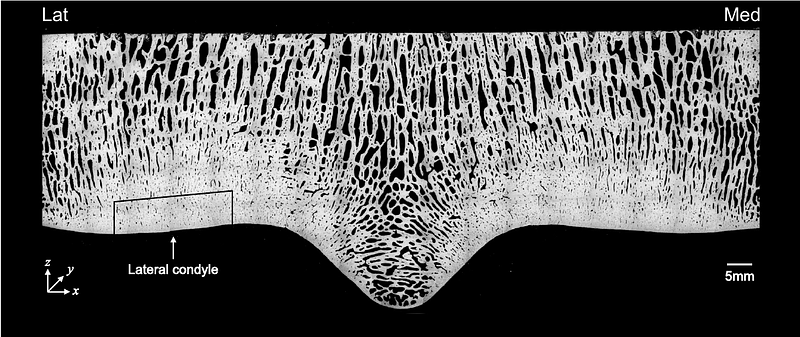A mathematical model of metacarpal subchondral bone adaptation, microdamage, and repair in racehorses

A mathematical model of metacarpal subchondral bone adaptation, microdamage, and repair in racehorses
Pan, M.; Malekipour, F.; Pivonka, P.; Morrice-West, A. V.; Flegg, J. A.; Whitton, C.; Hitchens, P. L.
AbstractFractures of the distal limb in Thoroughbred racehorses primarily occur because of accumulation of bone microdamage from high-intensity training. Mathematical models of subchondral bone adaptation of the third metacarpal lateral condyles are capable of approximating existing data for Thoroughbred racehorses in training or at rest. To improve upon previous models, we added a dynamic resorption rate and microdamage accumulation and repair processes. Our ordinary differential equation model simulates the coupled processes of bone adaptation and microdamage accumulation, and is calibrated to data on racehorses in training and rest. Sensitivity analyses of our model suggest that joint loads and distances covered per day are among the most significant parameters for predicting microdamage accumulated during training. We also use the model to compare the impact of incremental increasing training programs as horses enter training from a period of rest and maintenance workloads of horses that are race fit on bone adaptation. We find that high-speed training accounts for the majority of damage to the bone. Furthermore, for horses in race training, the estimated rates of bone repair are unable to offset the rate of damage accumulation under a typical Australian racing campaign, highlighting the need for regular rest from training.